What We’re Loving: Quarantine Edition
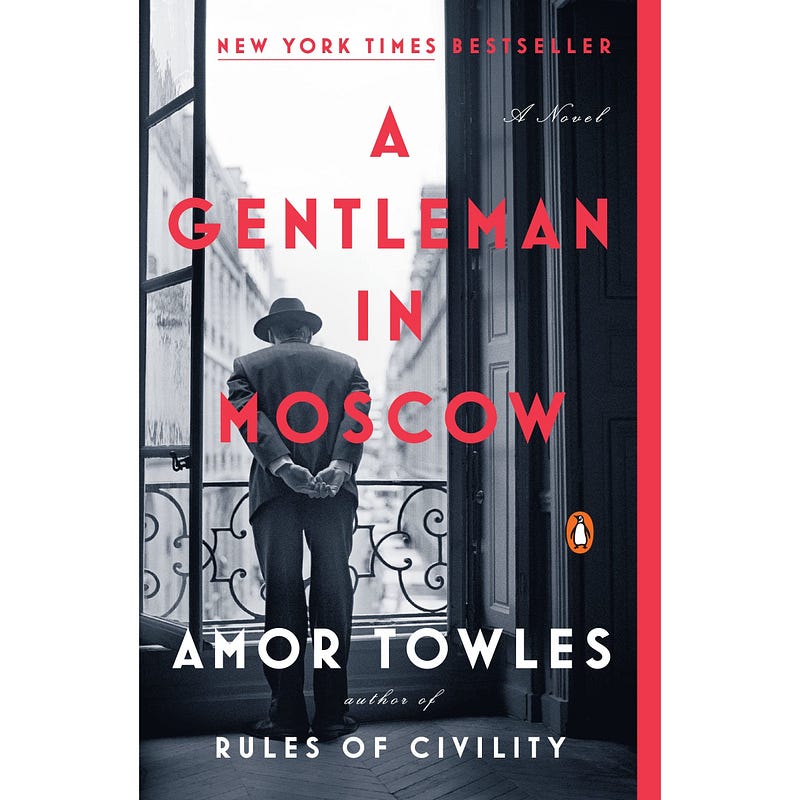
…our lives are steered by uncertainties, many of which are disruptive or even daunting; but that if we persevere and remain generous of heart, we may be granted a moment of lucidity — a moment in which all that has happened to us suddenly comes into focus as a necessary course of events, even as we find ourselves on the threshold of the life we had been meant to lead all along.
I had already read and re-read it four times; the pages of my paperback copy were characteristically dog-eared and tea-stained. But this time, something was different. This time, as I lost myself once again to the spell of Amor Towles’ historical fiction masterpiece, A Gentleman in Moscow, I felt suddenly raw, dissected, exposed. I felt as if I was staring into a mirror — my own life blinked innocently back at me, as if it had been there all along, waiting.
A Gentleman in Moscow follows Count Aleksander Rostov, who is deemed a threat by a Bolshevik tribunal in 1922 and sentenced to house arrest in Moscow’s Metropol Hotel. Unable to leave the Metropol for the remainder of his life, the Count must rediscover his own purpose during one of the most tumultuous eras in Russian history.
If its setting were changed to America in the year 2020, the novel couldn’t cut closer to home — many of us have never known uncertainties more disruptive and daunting than the coronavirus pandemic. But A Gentleman in Moscow is more than just a reflection of our lives: it is a manual for how to survive them. With its laugh-out-loud wit, charm, and incisive explorations of resilience, love, and hope, it provides us with a path through the darkness, a path we might be able to follow, one step at a time, to whatever light waits for us beyond.
There are books you read once; there are books you read twice; and then there are books you read until the pages turn yellow because you suddenly find that you can’t live outside the world within its pages. A Gentleman in Moscow is undeniably one of the latter. If you read anything while trapped in your own Metropol Hotel, let this be it.
— Cassandra James ’23
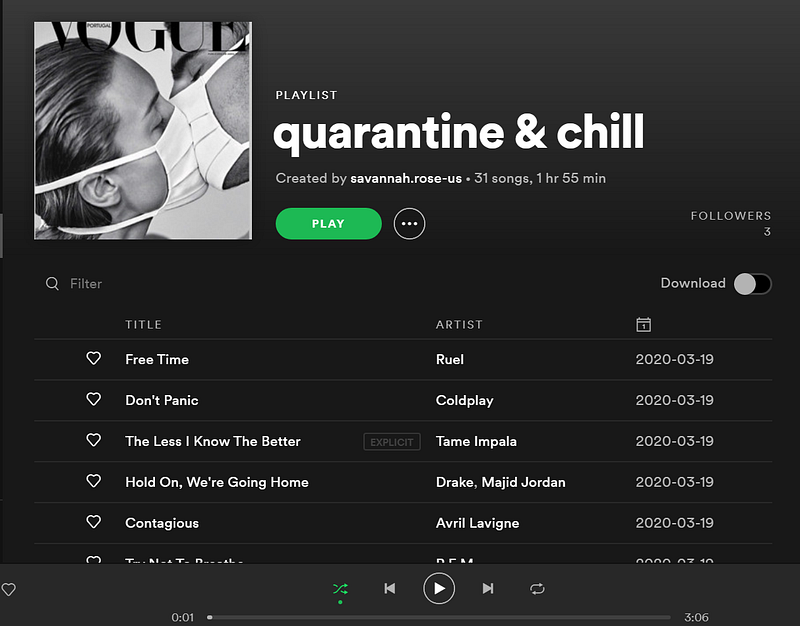
In a lame attempt to cope with the sudden and drastic change that snuck up on all of us during those beginning to middle weeks in March, just as campus awoke from a not-so-snowy winter dream, I placed my sneakers on the dashboard of my mom’s minivan and spent the hour and a half ride home fixating on a new Spotify playlist.
With my chin on my chest and a familiar radio station playing idly in the background, I set my intent on making a playlist that justified the absurdity of the situation. A habit and hobby of mine since my first heartbreak in high school, Spotify playlists are a mediocre version of therapy that I can carry in my pocket. Spending hours choosing songs in the heat of the moment, perfecting the cover picture, and aimlessly replaying them in my head until they sound just right, what I’m loving right now is the comfort of turning my nonlinear thoughts into a new title that appears on my account.
From Spotify’s New Music Fridays to finding new artists or genres to attach myself to, I have wholeheartedly launched myself into this new artform. Grateful from any break from the reality of isolation under quarantine, I find myself listening a little closer to the lyrics than before, sometimes letting myself just vibe with the beat, and always dancing whenever I get the chance. Music still is a way we can connect our thoughts and feelings while safely existing at least 6 feet apart from another human soul. So here’s to the online concerts, the endless streaming, and keeping our heads up in the midst of it all.
— Savannah Pobre ’23

It was a mistake to start this drama in the middle of the semester. Itaewon Class is a new South Korean drama out on Netflix and has generated a lot of excitement from viewers. Park Seojoon plays the main male lead whose story opens in the first two episodes as a loner kid who gets expelled from high school on his first day as a transfer student for punching the son of his father’s boss. I’ll be honest, the first two episodes didn’t really do much for me, and it set my expectations low for the rest of the series, but boy was I wrong.
I don’t watch a lot of K-drama, but I had already come up with a good idea of what the typical drama is like: usually some sort of rom-com, characters with a mysterious past, a gripping plot to be sure, but everything usually ends up sweet and neatly tied up by the finale. This drama does not only have beautiful leads but it successfully makes them all… rather unlikeable. Not that they make you actively hate them, but each character has flaws and makes mistakes — a degree of realism that isn’t typically found in protagonists.
Your main female lead, Jo Yiseo, isn’t a sweet girl with a heart of gold who just happens to catch the eye of a powerfully rich man. No, she is probably a sociopath and is the one who decides to pursue an ex-con who only graduated middle school. Needless to say, her mom kicked her out.
This drama is so good, not just for its plot, but for its diversity and representation of issues typical in modern-day South Korea. It addresses racism and homophobia, forces its characters to make difficult decisions, and gives every misfit in its beloved cast a chance to tell their story and shine on screen. The character development in this drama is painfully realistic. Not really a spoiler: the story spans many, many years, and we get to watch characters like Yiseo grow up and mature through pain the way adults actually do.
Itaewon Class is seriously a must-watch, whether you’re familiar with the K-drama genre or not. You’ll end the series seeing how each character has grown and lost over the years. It’s a happy ending, but everyone is a little broken by the end.
— Ivy Wang ’23
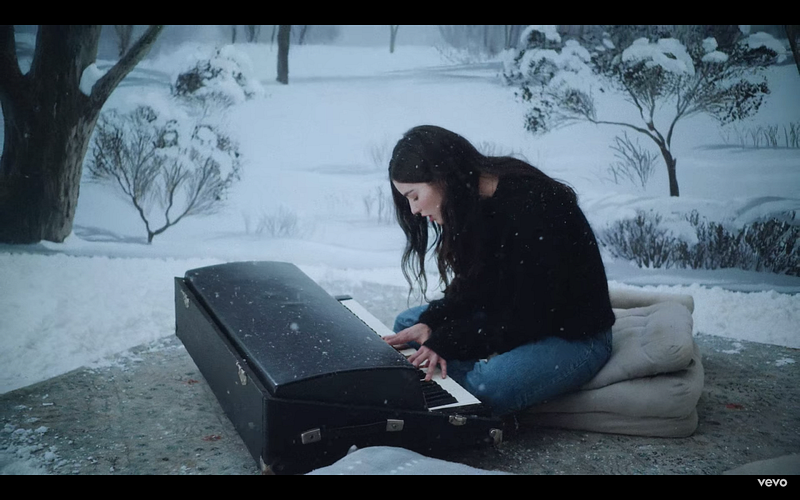
For years now, I’ve been following Gracie Abrams’ Instagram (@gracieabrams), where she posts snippets of songs she writes from her bedroom along with other ephemera from her life: nights out with her friends around our shared hometown of Los Angeles, face-masked selfies, polaroids atop her adorable rocket-ship bedsheets. To be a Gracie Abrams fan, then, has been to be in a constant state of frustration at the one-minute time limit for Instagram videos, as she often cuts off said songs right before their hook. Luckily for me, though, Gracie has begun releasing full singles over the past few months, all of which are ripe for fevered, emotional on-repeat listens. I’ve listened to her song (in my opinion the best of them) “21” maybe a hundred times in the duration of this quarantine, and depending how long it lasts, I may hear it a hundred more: the grace of Gracie is that it is hard for one to get tired of her, a valuable commodity nowadays. Better yet, the individual, childhood-bedroom-centric method to her songwriting might be an inspiration to anyone looking to express their feelings in a way slightly more refined than crying into their pillow — though, of course, it’s good for that too.
— Meera Sastry ’23
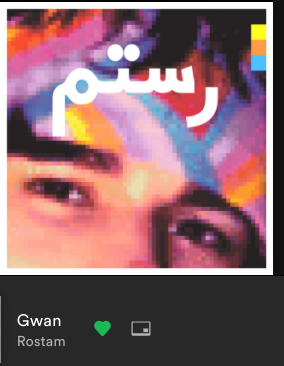
My queer friends and I have joked that quarantine has appropriated lesbian culture and made it mainstream; everyone is yearning, texting exes, flexing their baking skills, navigating long distance relationships and virtual intimacies. I think about different forms of “touch” (touch as care, attention, presence) that are being rediscovered or relied upon in deeper ways. I think about the collaborative playlist that I share with my friend. We made it within the first few days of quarantine; both of us are suckers for sapphic memes about yearning, so it felt natural extension of our friendship. It’s a quarantine playlist, but we didn’t have expectations beyond that.
At this point, we’ve accumulated 2 hours and 46 minutes worth of shared music and counting. The sounds and names are eclectic but common by the moods they evoke — presence, warmth, heartache, desire. I listen to the playlist every day, often before falling asleep, and my favorites change with the day, but my favorite right now is “Gwan” by Rostam. It is a light and airy song whose gaze is decidedly retrospective, glancing backwards at experience returning in dream form, shimmering in new light, uncanny in its displacement from the original. I like the formulation of life returning as a dream because it evokes both memories of the past and speculations for the future. It is a nostalgic song, but renders the nostalgia of the past and FOMO of the conditional (how might our semester have ended?), into an effervescent lightness, a dream that we can live together. The bright and lively strings surging the song forward no doubt help to create this hopeful mood, but there is a distinctive sense of human connection that powers through the song. In “Gwan” and his album “Half-Light” at large, Rostam consistently feels like he is speaking in direct address, to you — you you: “And sometimes I laugh / when I think about how well you know me.” After the dreams comes laughter, not from a nostalgic yearning for the past or hope in an envisioned future, but the mutuality of presence, of sharing this experience alone, together, that makes our memories feel lighter, like we might float away.
— Rebecca Ngu ’20

I’ve been keeping up with nearly every episode of Shortwave, a daily science podcast from NPR. The obvious science story is the Covid-19 pandemic. Host Maddie Sofia and reporter Emily Kwong have covered everything from where the coronavirus may have come from (bats) to a scary new symptom of the disease (anosmia, or the loss of smell) in digestible, 10-minute bites. But they mix in a healthy dose of NCVC (that is, non-coronavirus content), with recent episodes on the science of baking a loaf of sourdough, the physics of wiffle balls, and the causes of alarming honeybee die-offs. A neat recurring segment is Animal Slander, where Sofia and Kwong debunk common phrases like “birdbrained” and “memory of a goldfish.” Shortwave began before Covid-19 took over the news, the world, and our lives — but it is particularly useful now. In the midst of much confusion and misinformation on the science of the virus, I have found their healthy dose of skepticism and appreciation for data and evidence refreshing. They ask questions and point out caveats in the research that often get skimmed over. When discussing a study on how long the current coronavirus survives on various surfaces, for instance, the host points out that studies done in the controlled setting of the laboratory often can’t predict outcomes in the real world. Jokes are often a bit stale, and the show sometimes tries too hard to be funny. But it might be worth it just to listen to the intro music — which is great, and super catchy. If you like it, stay for a while. You might learn something new.
— Katie Tam ’21
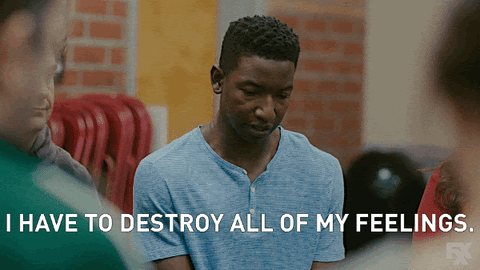
In attempts to gracefully finish my thesis and senior spring classes, and with my pandemic-enhanced propensity to binge watch, I decided to limit pop show intake to what is manageable — light, entertaining, not too many seasons, short episodes… so it had to be short-form comedy. I was in for a treat with FXX’s Cake, a self-described “handcrafted assortment of bite-sized content served up to viewers as a tasty treat for the mind.” While I would argue that the last part, for the mind, might perhaps be more narrowly for our humor receptors, with a half-hour run time and only eight episodes in the first season, each with seven to eight “bits,” Cake is lighthearted, entertaining, and exciting, for every bit brings something new and unexpected.
I made this fortunate discovery by first watching an episode of Oh Jerome, No on Hulu, which led me to the smorgasbord of live-action and animation that is Cake, in which Jerome is a recurring, eight-episode “bit.” While several critics favored the Cake’s parody music video series Quarter Life Poetry by Instagram creator Samanhta Jayne, and others took pleasure in the various animated segments, I found Oh Jerome, No to be my favorite, due to a bias, perhaps, being quite keen on Mamoudou Athie who plays Jerome. His character is an “extremely sensitive young man in Brooklyn” who is just… well, trying to figure it out. Creators Alex Karpovsky and Teddy Blanks talk in interviews about wanting to show, through an absurdist lens, the tension of expectations and reality and its consequences on one man’s emotions. The verisimilitude of Jerome’s universe is on thin ice at times (in episode one, Natasha Lyonne’s character mauls and eats a pigeon for lunch), but it all blends well overall, oftentimes salvaged by the humor itself. A dog named Party-time appears in the initial episodes, creators joked that they simply wanted Athie to yell Party Time! In a despondent way.
Jerome reminded me of the Netflix show It’s Bruno!, which I saw many months ago and which induced this same satisfying feeling of having just binged a short and entertaining piece of parody that does not pretend to be anything other than what it is. It’s Bruno! revolves around Malcolm, a born and bred Brooklynite, and his bug-eyed dog Bruno, parodying the obsessive behaviors of dog owners in the sweetest and most earnest way. Malcolm is competitive and fears no confrontation when it comes to protecting the world that revolves around his dog, which he created and actively perpetuates, at times really pushing societal boundaries — like when he pets a neighbor’s granddaughter to show her why she should not have pet Bruno without asking him. And Bruno, he is just a dog, no magic powers, no sci-fi humanization. His pure and ordinary dogness is exactly what makes the show an absolute treat — pun totally intended. Bonus: it has a great soundtrack, and the amazing New Jersey native Shakira Barrera plays a dog-thieving seductress (a parallel with Party Time and Jerome’s unfortunate expeditions in online dating).
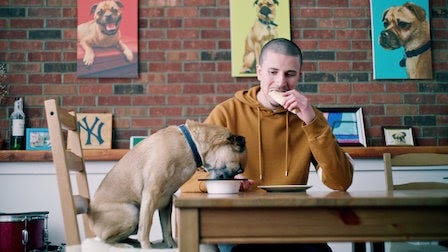
So, if you are looking for something entertaining, light and binge-manageable, both Oh Jerome, No and It’s Bruno! run at less than two hours for the whole season, and do not require more mental energy than what you might have working on your thesis while trying to reconfigure a new way of being in the completely changing world.
— Bes Arnaout ’20

Xi Guo’s watercolor paintings are dreamy and airy, with the subjects suffused in light, showcasing both her skill for realistic rendering and her eye for composition. Her meticulous attention to detail is evident through the rich plant life she depicts, where every ridge and stem and dew drop is articulated, and the folds and patterns in the cloth are painted down to the stitch. Guo’s art captures a sense of stillness and suspension, and the beautiful colors and lighting create a melancholy, sombre atmosphere, where her figures seem to glow from the page.
Her art can be found on her personal website (xiguowatercolor.com).
— Sydney Peng ’22

Quarantine for me has seen a large effort to evade boredom. I’m exercising more, exploring my bartending skills on my more-than-willing parents, and, the Quarantine Staple, going on numerous walks. (I should have invested in a Fitbit.) I don’t have any dogs or cats or any pet that one may walk, so I have turned to the company of podcasts, music, the occasional 6-foot apart friend, or, most notably, the soundtrack to the movie Hairspray (2007) based off of the 2002 musical, which itself was based off of a John Waters movie from 1988. The story itself is set in the 1960s.
This story seems to have stood the test of time, coming off as a classic despite its youth. Perhaps this is due to the overripe saccharinity, the energy and cheerleader pep, and the kiddie-pool shallowness of the central message (accept people who are different!), which ordinarily would detract but coalesce here to provide the exact source of escapism we need. The electricity, smiles, and easy-listening all perfectly match the (for me) California sun, blooming flowers, and sweet and summery breeze like wine and cheese.
This is not to say that Hairspray has nothing intellectually stimulating — while pure escapism has its supporters, I personally do not enjoy mind-numbing fluff. Just listening to the soundtrack alone, the cheeky wit of the book (or lyrics to the songs) is on full display: “Round Three is when we kiss inside his car / Won’t go all the way but I’ll go pretty far.” Each song offers a masterclass in characterization: “I would say, ‘Oy Gevalt,’ if I wasn’t Miss Baltimore Crabs.” There is humor and innuendos aplenty: “We’ll keep it in a oven ’til it’s good and hot / Keep on stirring ’til it hits the spot.” And even, perhaps my favorite song, a refreshing tale of the same love story told through an aging couple: “I can’t stop eating / Your hairline’s receding / And soon you’ll have nothing at all / So you’ll wear a wig / While I roast a pig / Hey, pass the Geritol!”
I should mention: feel free to indulge yourself with just the soundtrack to the movie. It can surely stand alone. But if you watch the movie as well, your appreciation will only grow, and not only because of John Travolta’s immensely entertaining tour-de-force performance. Additionally listen to other recordings of the musical (i.e. the recent NBC Live adaptation with a Jennifer Hudson reminding everyone what powerhouse vocals are or the Original Broadway cast with its effortless purity), may introduce you to some songs left out of the movie’s linearity, like the crowd-pleasing and compositionally impressive “Mama I’m a Big Girl Now.”
Though we may not be able to see it live — and I do recommend, when it’s seen live, every clever intricacy is on full-display — we still have modern technology and adaptation to save us for now.
— Benjy Jude ’23
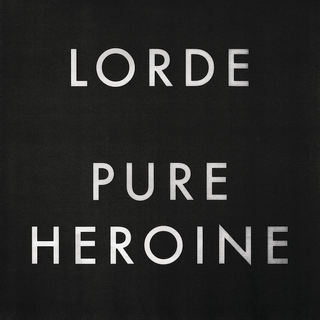
I think many of us have found that quarantine, whether we want it to be or not, has been a time for reflection and reminiscence. Be that our memories of Princeton, of being outside, of spending time with friends or loved ones, or more, I know that one way I’ve reminisced is by revisiting music that I’ve loved (partially due to how frequently old favorites have shown up in other people’s Instagram 30 day challenges).
Among my favorite albums (likely of all time) is Lorde’s debut, Pure Heroine. A year and a half ago when I was writing my application for Princeton I found myself putting down “Ribs” as my favorite record, and while “A World Alone” gives it a run for its money, much of that still rings true. Pure Heroine is (in my opinion) a perfect album about leaving your teenage years and entering into adulthood. Everyone knows the feeling Lorde describes as “all my fake friends and all of their noise / they’re studying business, I study the floor” from that time you found out your friend was an ORFE major (kidding! I’m COS I can’t judge). But, in all seriousness, from the nihilistic humor of “Buzzcut Season” (“I remember when your head caught flame / It kissed your scalp and caressed your brain / Well you laughed, baby it’s okay / It’s buzzcut season anyway”) to the unease of “Still Sane” (“I’m not in the swing of things / But what I really mean is / Not in the swing of things yet”), Pure Heroine might be providing the perfect quarantunes. So, maybe give it a listen (and if you do, skip “Royals”) or revisit old playlists on Spotify because a little nostalgia isn’t the worst thing in the world.
— AnneMarie Caballero ’23

Yiyun Li’s second novel, Kinder Than Solitude, follows three friends whose lives are inextricably bound by the poisoning of an acquaintance. The novel dips into the perspectives of Ruyu, Moran, and Boyang during their childhood in Beijing and their adult lives in America and China. We learn early that Shaoai was poisoned, and the mystery of who is to blame for her ensuing paralysis pulls the narrative ahead. It’s not just for the reveal that one keeps reading, however. The novel’s psychological acuity is its greatest strength. Li’s clean, uncompromising prose lays bare her characters’ emotional landscapes. The omniscient narrator often slips in comments on humanity — “Disappointment is for those who begin with a plan, those who sow seeds and refuse to accept the barrenness of life.” It is the truth of these statements, which readers recognize in their hearts, that makes them powerful.
— Ashira Shirali ’22

I’ve watched a lot of movies over the course of this quarantine, but the French documentary Tomorrow (2015), by filmmakers Mélanie Laurent and Cyril Dion, has been the one I can’t get off my mind.
As university students, we are well aware of the challenges that face our world: climate change, poverty, hunger, economic collapse. Very often we feel powerless in the face of these challenges, which are too big, too structural, for us to face by ourselves. Tomorrow was the first documentary that made me feel the exact opposite.
It is not only an optimistic film, with happy images of local farms, small businesses, the chic and adventurous filmmakers themselves, smiling children, and so on. It also attacks the problems at hand at the roots in order to explore solutions. Through interviews with innovative farmers, economists, lawyers, small business owners, mayors, and local concerned-citizens-made-activists, the filmmakers lay out clear, manageable steps that anyone can take. For example, did you know that farms that grow different crops together have a higher yield per acre — and are therefore more efficient — than destructive monoculture-based corporate farms? Or that the Finnish school system is the best in the world precisely because it is so relaxed, focused on social skills and personalized learning, without standardized tests?
The filmmakers’ idea of “changing the world” is far from simple. Building a more sustainable and functional society will require changes in not just agriculture and renewable energy, but also changes to the economy, democracy, and education, all which depend on each other. It’s a tall order. But, as the filmmakers show, many potential solutions already exist, and they start from the ground up.
The most surprising lesson I took from the movie is also its most crucial. Just like ecosystems are more stable when they’re diverse, so are human societies. We’ve all watched with anxiety as supply chains fall apart, unthinkable amounts of fresh food are dumped or left at farms to rot, the government rushes to bail out the economy, and many people across the globe face food shortages and hunger in the midst of the coronavirus crisis. We have a globalized economy that has been revealed to be extremely precarious. Perhaps the aftermath is our chance to diversify, focusing on the local, in order to create a system that’s more resilient. Starting at the grassroots is not only the easiest way to begin — it’s also essential to the health of the world.
After watching Tomorrow, I feel hopeful that, if we chase a different dream for ourselves, we can create a better world — and energized to pursue it. That’s been a gift to me while stuck at home.
— Julia Walton ’21